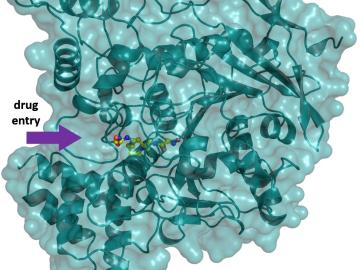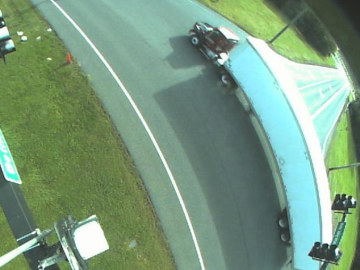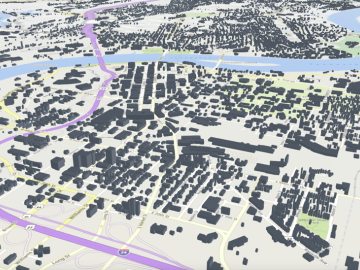Filter News
Area of Research
- Biology and Environment (4)
- Clean Energy (13)
- Climate and Environmental Systems (2)
- Computer Science (1)
- Energy Sciences (1)
- Fusion Energy (4)
- Materials (7)
- Materials for Computing (1)
- National Security (4)
- Neutron Science (4)
- Nuclear Science and Technology (4)
- Nuclear Systems Modeling, Simulation and Validation (2)
- Supercomputing (6)
News Type
Date
News Topics
- 3-D Printing/Advanced Manufacturing (2)
- Advanced Reactors (6)
- Artificial Intelligence (1)
- Big Data (3)
- Biology (2)
- Biomedical (6)
- Climate Change (5)
- Computer Science (7)
- Coronavirus (3)
- Energy Storage (7)
- Environment (8)
- Frontier (1)
- Fusion (3)
- Grid (3)
- Isotopes (1)
- Machine Learning (3)
- Materials Science (8)
- Microscopy (2)
- Molten Salt (1)
- Nanotechnology (2)
- Neutron Science (4)
- Nuclear Energy (6)
- Polymers (2)
- Summit (3)
- Sustainable Energy (8)
- Transportation (4)
Media Contacts

Oak Ridge National Laboratory’s high-resolution population distribution database, LandScan USA, became permanently available to researchers in time to aid the response to the novel coronavirus pandemic.

Researchers at Oak Ridge National Laboratory demonstrated a 20-kilowatt bi-directional wireless charging system on a UPS plug-in hybrid electric delivery truck, advancing the technology to a larger class of vehicles and enabling a new energy storage method for fleet owners and their facilities.

In the 1960s, Oak Ridge National Laboratory's four-year Molten Salt Reactor Experiment tested the viability of liquid fuel reactors for commercial power generation. Results from that historic experiment recently became the basis for the first-ever molten salt reactor benchmark.

Scientists at Oak Ridge National Laboratory used a focused beam of electrons to stitch platinum-silicon molecules into graphene, marking the first deliberate insertion of artificial molecules into a graphene host matrix.

Oak Ridge National Laboratory researchers working on neutron imaging capabilities for nuclear materials have developed a process for seeing the inside of uranium particles – without cutting them open.

In the most comprehensive, structure-based approach to date, a team of scientists may have discovered a new family of antidotes for certain poisons that can mitigate their effects more efficiently compared with existing remedies.

Large trucks lumbering through congested cities could become more fuel efficient simply by not having to stop at so many traffic lights.

Oak Ridge National Laboratory researchers have developed a modeling tool that identifies cost-effective energy efficiency opportunities in existing buildings across the United States.

Researchers at ORNL demonstrated that sodium-ion batteries can serve as a low-cost, high performance substitute for rechargeable lithium-ion batteries commonly used in robotics, power tools, and grid-scale energy storage.

A novel approach developed by scientists at ORNL can scan massive datasets of large-scale satellite images to more accurately map infrastructure – such as buildings and roads – in hours versus days.




